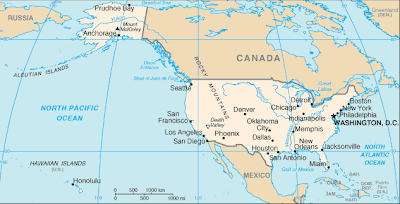- The USDA Hardiness Zone Map is probably the best known of the maps listed here. It is used by gardeners and farmers nation-wide as a general guide for selecting plants that will thrive in a given location. The map is divided into zones that depict average annual minimum winter temperatures. When you go to purchase plants or seed packets you will often see what zone the plant is recommended for. The 2012 hardiness zone map is available for download but is now also available as an interactive map that can be searched by zip code.
- While knowing the hardiness zone that you live in is important, it can be equally important to determine when frost might begin appearing in the garden in the Fall. The Better Homes and Gardens First Autumn Frost Map might help do just that. While the map is not very precise, it can give a general window for the gardener to keep watch on the temperature.
- Another USDA map useful to the gardener is the soil survey map. The map provides soil data and information for more than 95% of the counties in the United States. The soil in an individual’s home garden will likely be slightly different than what is found in the map but the survey will describe the major soil types for a given area. This can be extremely helpful to the gardener who is trying to decide how to best amend his soil for the type of planting he intends to do.
- USAblight is “a national project on Late Blight of tomatoes and potato in the United States”. Tomatoes are one of the most popular vegetables grown in US gardens. It is easy to see why this disease is an important one to track. Late blight was the cause of the Irish potato famine in 1845. USAblight uses a Google map to show reported incidences of Late Blight. The map can be checked to track outbreaks or to report one.
- Just to emphasize the importance of Late Blight, uspest.org has designed their own Google powered blight risk map. This one displays not only reported outbreaks but risk conditions throughout the US. Other maps available for use on this site include Daily degree-day accumulation modeling maps and a Page with Weather, Plant Disease Risk and Degree-Day/Phenology models.
- Again the USDA provides a useful application that the gardener can leverage for his own use. The PLANTS database provides information about a variety of plants found throughout the United States. The most significant category for the knowledgeable gardener might be on the topic of cover crops. Clicking on this link will bring up a list of cover crops. The user can click on the plant’s name and be taken to an interactive map showing US states and counties. Clicking on your state will show whether that cover crop is native or naturalized. Much more data than this is also presented about your selected plant in a non-spatial format. This database also has fact sheets, guides, culturally significant and alternative crops data and information about invasive and noxious weeds.
Gardening is one of the most popular hobbies in the United States. It is also one that can directly benefit from GIS technology. If you have a green thumb I highly recommend spending a few minutes checking out some of the above resources. If you know of any other sites that would help gardeners be more efficient or more productive, leave a comment below and let me know what they are.
Update 2/25/2012:
The good folks at Hampton Hollow Farm ( @HHollowFarm ) pointed out that they use AgSquared, an online farm planning and management software package, to run their organic vegetable farm in Nova Scotia. According to the AgSquared website the software allows you to create a “Farm Plan” which includes an interactive field layout mapping tool. You can also manage your farm’s schedule, keep year to year records, plan harvests and generate reports. The software looks powerful and was designed for small farms but even the home gardener could benefit from its use. The software’s regular price is only $60 per year making it affordable even for hobbyists.



